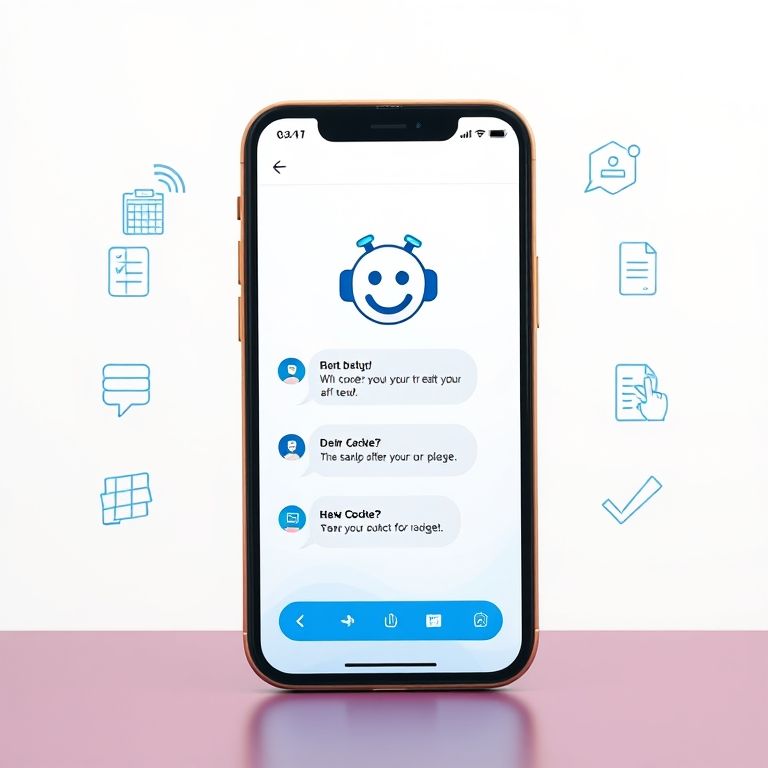
28
AI Mobile Chatbot Integration Tutorial: Step-by-Step Guide for 2025
Learn how to integrate an AI mobile chatbot into your app with this 2025 tutorial—boost engagement, automate support, and delight users on iOS and Android.
Want to deliver instant support and personalized experiences in your mobile app? Integrating an AI mobile chatbot is easier—and more powerful—than ever in 2025. This step-by-step tutorial covers everything you need to add a smart chatbot to your iOS or Android app, using top platforms and the latest SDKs.
Why Add an AI Chatbot to Your Mobile App?
- 24/7 User Support: Automate answers, onboarding, and troubleshooting.
- Boost Engagement: Personalized chats keep users coming back.
- Lead Generation: Qualify users or collect signups directly in-app.
- Faster Issue Resolution: Solve problems instantly—no waiting for a human.
- Cost Savings: Reduce manual support tickets and staffing.
Top AI Mobile Chatbot Platforms & SDKs for 2025
1. Dialogflow (Google)
- Multilingual, rich media support, analytics, webhooks.
- SDKs: Dialogflow for Android/iOS
2. Microsoft Bot Framework
- Powerful AI, integrates with Azure Cognitive Services, omnichannel.
- SDKs: Bot Framework SDKs
3. IBM Watson Assistant
- Natural conversation flows, context awareness, advanced NLP.
- SDKs: Watson Assistant for Mobile
4. Kommunicate
- Ready-to-use mobile SDKs, no-code bot builder, live chat handover.
- SDKs: Kommunicate Android, Kommunicate iOS
5. ManyChat & Tidio
- Quick integrations for mobile web and hybrid apps (React Native, Flutter).
Step-by-Step: How to Integrate an AI Chatbot in Your Mobile App
Step 1: Choose Your Chatbot Platform
Pick a provider that matches your needs (e.g., Dialogflow for complex AI, Kommunicate for fast setup).
Step 2: Build and Train Your Bot
- Design conversational flows, FAQs, and fallback responses in your platform’s dashboard.
- Connect your bot to external APIs or databases if needed.
Step 3: Get the Mobile SDK or API Credentials
- Download the relevant SDK for Android (Java/Kotlin) or iOS (Swift/Objective-C).
- Or use platform-agnostic SDKs for React Native, Flutter, or other cross-platform frameworks.
Step 4: Integrate SDK Into Your App
For Android (Java/Kotlin):
java Copier le code// Example for Kommunicate Kommunicate.init(context, "YOUR_APP_ID");
For iOS (Swift):
swift Copier le codeKommunicate.setup(applicationId: "YOUR_APP_ID")
For React Native/Flutter:
- Install the package via npm or pub.dev.
- Follow the platform’s docs to initialize and render the chat widget.
Step 5: Customize the Chatbot UI
- Style the chat widget to match your app’s branding.
- Enable features like quick replies, file upload, voice, or push notifications.
Step 6: Test and Deploy
- Test chatbot conversations, error handling, and edge cases on real devices.
- Launch your app update and monitor user interactions with built-in analytics.
Image: “Mobile app screen with a live AI chatbot conversation” (alt: AI mobile chatbot integration tutorial app example 2025)
Pro Tips for Success
- Integrate analytics to track user satisfaction and retention.
- Set up escalation to live agents for complex issues.
- Update chatbot content regularly as user needs evolve.
- Ensure GDPR/privacy compliance if handling personal data.
Real-World Example
A fintech app added Dialogflow chatbot integration for onboarding and support. Result: App retention improved by 23%, and customer support tickets fell by 41% in 3 months (source).
Internal Links
- Best Free AI Chatbot for Website Integration
- AI Chatbot with Sentiment Analysis
- AI Chatbot for Lead Generation
Conclusion
Integrating an AI chatbot in your mobile app is a high-impact move for 2025. Choose your platform, follow these steps, and deliver smarter, faster, and more delightful experiences for every user.
Contact
Missing something?
Feel free to request missing tools or give some feedback using our contact form.
Contact Us